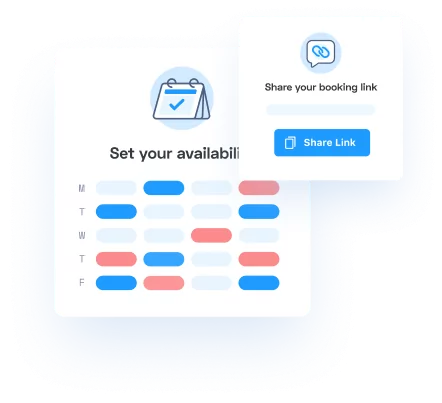
Workers are quitting their jobs in record numbers this year. The waves of resignation have been largely attributed to the pandemic. One thing is for sure – employers can’t close their eyes to it. The need to motivate employees and keep them around has become more apparent than ever, as job openings in every sector have given people a sense of renewed opportunity.
For those who stick around at a job they don’t like, it’s common to find that there’s difficulty with focus and productivity. Around 67% of workers in the US alone are reportedly disengaged at work and not motivated enough to put in all their efforts. This loss of productivity is causing more than a trillion dollars to these companies each year.
Let’s figure out how to boost employee engagement and keep them motivated without relying solely on financial benefits.
What truly motivates an employee?
- Money is a great motivator (and a living wage is more important than ever today). But once you’ve secured your talent at a reasonable pay grade, you still need to motivate them to excel. Bonuses are common for salaried positions and it can’t hurt to buy the team lunch occasionally. But if an employer’s only tactic is spending money, they will eventually burn a hole in their pocket. In fact, a 2022 report by Hypercontext found that while unfair salaries resulted in employees being 1.3X more likely to apply for another job, average or competitive salaries didn’t have a notable impact on retention.
Employees are unique in their goals and desires. Some people choose a job to keep their mind stimulated, for personal development, or even for a sense of recognition from others when they accomplish something big.
Until you know your employees inside out, it’s hard to know what truly drives them. And without that, you can’t give them the right push. The key is always to get to know your employees better and figure out their priorities. Once you have that down, only then can you help them focus their energies at work.
Here are a few important factors that are truly valued by employees and help them stay motivated.
The desire to learn and grow at work
Most people are looking for some sort of learning and growth at work. They want to improve their skill set and move ahead in their professional careers. Nurturing this thirst for knowledge can do wonders. For example, consider pairing ambitious junior employees with a mentor at the company who has experience in their field of interest.
The professional opportunities that come from acquiring new skills or knowledge have their own special value. It’s the difference between giving someone fish and teaching them how to fish. When an employee feels they are learning something interesting, there’s an innate satisfaction that propels them to get better over time. They also gain confidence that the organization cares about them and wants to see them succeed. You can also consider running a hackathon to keep employees engaged and to accelerate innovation.
Providing the time and space to learn is fine, but it’s usually not enough. Without some guidance, the opportunity to learn new skills can devolve into a culture of slack and negligence. Employees need resources to learn from so that their time is well spent. Organizations can support continuous learning by curating collections of educational apps that cover professional development, productivity, time management, and skill-building, making it easy for employees to access quality learning resources on their own devices and schedules. Therefore, the organization needs to ensure that these resources are provided.
Above all, the workplace should be an environment that fosters creativity and innovation. The learning process is the fastest when employees are given the room to experiment with their ideas and learn from their mistakes. This way, when they can try new things out without the fear of repercussion, they understand what works and what doesn’t.
Exploring alternatives to your existing process
Asking employees to perform the same, limited set of tasks for several years is likely to impact their motivation. People get bored when they have to do the same things day in and day out. If your company has been running systems in the same way for a long time, it might be time to switch them up a bit.
Introducing more effective and streamlined solutions to daily workflow can lead to some good wins. Think about where you can save your team time and effort on things that don’t matter. For example, try implementing an online scheduling tool to help your sales team connect more effectively with their leads and prospects.
For most companies, it might not be practical to reimagine an employee’s core responsibilities. But managers can implement small changes in daily workflow, refresh the office space to keep the atmosphere uplifting, and or carve out dedicated time during work for learning something new. Our routines are closely tied to our schedule, so changing the time of day that tasks are performed is another option.
Here are a few simple ways that employers can help create an environment that naturally motivates employees.
- Let them take ownership. Letting employees take ownership of their tasks creates a sense of responsibility, and they put all of their efforts into making sure that whatever they start reaches the end.
- Employee engagement. Employees that are better engaged genuinely enjoy their work and are more likely to invest in whatever they do. The results they produce are of higher quality, and the productivity rates are usually high. One idea to improve employee engagement is by transitioning certain meetings (town-hall or hall-hands meetings can be perfect for this) to an internal company podcast that can be listened to anytime, anywhere.
- Understanding millennials. Whatever the demographics of your company may be, it’s important to understand the cultural heart of your employees. Millennials respond to different kinds of rewards than the former generation.
- Work-life balance. Helping staff maintain a good work life balance will keep work-related stress in control. Employees become more loyal when their free time is respected. Give your employees space to take breaks.
- Achievable goals. Set company goals that are realistic and achievable for the employees that are currently on board. Don’t go above and beyond their limits, thinking that it will make them push harder. It may lead to severe burnout.
- Employee recognition program. A little appreciation can go a long way. Recognizing the small wins of your employees will not only have a positive impact on their mental health but also increase their loyalty to your company. Appreciating your employees will take you far in the relationship with them.
- Consider showing your gratitude through thoughtful gestures like gifting Custom Canvas Prints. This helps reinforce the value you place on their contributions.
- Friendly competition. Competition does tend to push employees to put in their best efforts but can get toxic very fast. Make sure the competition stays friendly, and the competing parties respect each other.
- Positive feedback. Do not be harsh while giving feedback to your employees even if they aren’t doing a great job at work. Using effective employee feedback tools can help you convey your feedback respectfully and constructively, and they will definitely work on it and improve their performance.
- Professional development. This one connects to the growth and development discussed earlier. Build a culture of learning at your company so that the employees know how they can work on their skills and climb the corporate ladder. Utilizing room scheduling software can streamline the booking process for training rooms and conference spaces, ensuring that employees have consistent access to the resources they need for ongoing professional development. You can also consider subsidizing select short courses or professional development courses that are relevant to their role in the company.
- Brand pride. When employees receive company swag, it sends a clear message that their contributions are valued and recognized. Providing practical and aesthetically pleasing items like bags, custom hoodies or phone cases showcases the organization’s attention to detail and genuine care for their employees’ satisfaction. This, in turn, boosts morale and motivation, as employees feel a sense of pride in their affiliation with the company.
How to create an environment that motivates employees
Let’s dive into a little more detail and create an actionable framework for creating an environment that motivates your employees at work.
Promote ownership & accountability
A culture of ownership and accountability gives employees the freedom to work on ideas that they think will work better. This way, they define their own approach and find the most efficient ways to do their job.
Naturally, this level of autonomy is accompanied by a certain level of accountability. But you can’t force this accountability on them. What you can do is give them the necessary tools like employee engagement software which can also help them to accomplish what they have been tasked to do and then let them handle things their way. Digital signage software can help reinforce that sense of independence by broadcasting key updates, recognitions, and metrics that keep everyone in the loop without micromanagement.
When you do this, they will naturally develop a mentality of ownership that benefits them and the business as a whole.
Boost employee engagement
Having a highly engaged workforce will boost your company’s productivity, profitability, and retention. This is low-hanging fruit that companies should not miss out on. All that management needs to do is stay connected with employees and nurture the relationship over time.
Spending time with employees can mean anything. Like a friendship, listening to each other and sharing stories will go a long way. Prioritize their mental and physical well-being and help them settle in better with more socializing and team building activities. Try to discover the passionate, human side of them and you will automatically engage them better.
Understand generation gaps
We are going through such an exciting time that we see all the different generations working together in similar roles at similar workplaces. As an employer and a leader, you need to recognize the differences between them and treat each one of them accordingly.
Culture plays a big role in how people want to connect. The boomer generation grew up with a different set of ideals than Millennials, and likewise, with Gen Z. If you’re having a company party, it helps to know what their favorite shows, movies, and music are.
You may also notice differences in ambition between the different generations. A young college graduate, who might only have access to a student debit card and doesn’t have much experience, for example, is hungry to learn as much as possible. Whereas a seasoned manager may come in and be focused on implementing existing skills. Let each type of person find their suitable roles so that they can perform at their best.
Promote work-life balance
Putting one hundred percent of your time and attention into work can be counter-productive. It leads to severe burnout and keeps employees from doing their best.
Employees should probably not be putting in extra hours every day just to complete their work unless there are some special circumstances. If they are overworking themselves, management should be attentive enough to notice and intervene. Maybe this means helping them to better structure their workday. Help them out with the situation, and don’t hesitate to take some work off their shoulders.
Also, when employees are having issues outside of work that hinder work performance, managers should consider whether there’s anything they can do to help adapt. For instance, if an employee or their family member has been affected by medical malpractice, it can be a significant source of stress and distraction. By showing compassion and empathy, managers can help employees navigate challenging situations and get back to performing at their best.
Set SMART goals
The SMART framework is guaranteed to improve employee motivation and engagement as it makes their goals specific, measurable, achievable, realistic, and time-bound. It gives employees a clear sense of direction and helps them organize their everyday tasks to meet targets.
This also helps you evaluate employee performance and reward them accordingly. In cases where performance needs improvement, incorporating a performance improvement plan can provide a structured approach to help employees get back on track. A fair rewards mechanism adds to the motivation of employees, and they start putting in extra hard work to get the rewards they deserve.
Recognize and reward achievements
Most folks enjoy being recognized and appreciated for their efforts. A little appreciation can go a long way. Give employees the motivation they need to perform better.
Workplace recognition gives employees a sense of accomplishment and they feel valued by their peers and managers. Managers can easily do so by expressing gratitude for their work or giving them rewards like a new title or shoutouts at the workplace for a job well done.
These actions may seem trivial, but you will visibly see their productivity levels increasing once you start doing so.
Promote healthy competition
Try to promote a healthy and friendly competition among coworkers so that they can push each other to perform their best and learn from the experience at the same time.
An environment of healthy competition fosters the pursuit of higher achievements and makes everyone in the group root for everyone else. Instead of wishing that others fail, the employees will collectively hope that everyone does well. The organization will benefit a lot from this process. To further support growth, businesses can encourage teams to assess their current data skills and capabilities using tools like DataCamp’s Data Maturity Assessment, helping them identify areas for improvement and set clear development goals.
Give constructive feedback
The modern world has already rejected the idea of being ‘brutally honest’. You don’t need to be harsh and disrespectful to someone, even when you have to tell them that they aren’t doing a great job.
One effective method is using 360 degree feedback to provide a well-rounded view of an employee’s performance. Make sure that you address your employees with respect and give them constructive feedback on their performance instead of scolding them. Help them find ways to improve their performance instead of just putting them down and telling them that they will never be able to succeed. Work with them on areas they are weak in, and you will see their job satisfaction level skyrocketing in no time.
Encourage professional development
A culture of learning and growth not only helps the employees improve their skills, but also helps you retain and nurture talent better. Allowing your employees to learn more and more about the work they do shows them a clear path to climbing the corporate ladder, and as a result, they become more focused and motivated. Incorporating AI coaching can streamline this process, providing employees with accessible and effective resources to enhance their skills.
When you genuinely start caring about the professional development of your employees, they start contributing to your business in ways you could never have imagined.
Retaining the highest quality employees
A business is only as good as the human resource it has. No matter how big of a brand you are, you can never afford to let go of your highest quality employees.
Unfortunately, employees do quit and there is nothing you can do to stop them. All that a company can do is provide a good working environment so they don’t have a reason to quit. This could include everything from a smooth onboarding process at the beginning of their employment to providing fair compensation and bonuses over time. Even the physical environment matters; features like well-lit spaces, accessible resources, and dependable security systems such as Coram’s best nvr camera system help create a workplace employees feel comfortable staying in.
Here are some additional steps you can take to reduce employee turnover and maximize retention.
- Communicate with your employees as much as you can. Make sure that you don’t always talk about work when you meet. Try to understand the human element of their personality so that they could feel a genuine connection with their workplace. Also, try to keep your conversations casual so they feel comfortable opening up about any issues they are having in time.
- Be as flexible as you can in terms of their work arrangements or work routines. Don’t micromanage their day. Instead, give them the autonomy they need. This could also include having flexible work hours or check-in times, etc.
- Do not always delegate tasks but also delegate authority so that they can handle things their way and be more comfortable at what they do.
- Acknowledge all of their milestones, no matter how big or small they may be. Give them the attention and recognition they deserve, even for their small wins. And always express your gratitude towards them as they put all their efforts to make sure that your business succeeds.
You can read up more on how to improve your employee retention and decrease turnover here.
FAQs
There is no greater asset to a company than the motivated employee who loves their job and is sincere about hitting your goals. Here are some FAQs that will help you clear out any confusions you might have.
What is the secret to keeping employees motivated?
Employees that are valued by their employer are the most likely to stay motivated and dedicated. You can keep your employees inspired by communicating with them regularly, appreciating their efforts, giving them work autonomy, and compensating them adequately.
Is there a single, best way to motivate employees?
There is no single best way to motivate your employees. Different employees value different things, and no single benefit can be said to keep all of them motivated. You need to get to know your workforce better to see what works for them and then provide them with what they require to stay engaged at work.
If you want to motivate an employee, should you give them a raise?
Raises can be a great motivating factor but aren’t always the most effective one. Instead of extrinsic motivation, you can also provide them with intrinsic motivation through opportunities for professional development, recognition, fulfillment, etc. This way the motivation they get is more consistent and sustainable.
What are the downsides of motivating an employee with money?
Empowering employees with money is costly and not always sustainable. Financial rewards like a yearly bonus or commission are a good baseline, but beyond that, it’s not a great idea to rely on money beyond that. Instead, try to focus on intrinsic rewards like work autonomy, recognition for successes, and opportunities for learning and growth.
What are common incentives for sales teams that beat their quota?
Sales teams that need to beat their quotas can be incentivized in several ways. Higher commissions are one option, but other things like sales training and education can help them to sharpen their skills. This motivates them to practice and gets better, achieving their goals and earning more commission.
What can I do to motivate a customer success team?
Since customer success managers don’t work on commission, you’ll need to find other ways of motivating them. As human-facing employees, they work in the field of communication. So talking with them regularly is a good starting point. They are likely to let managers know if they need something in order to better assist. Sometimes what they need is for your company to serve the customer better, so be sure to listen to that feedback. Making improvements will validate their input and delight the customers too.
What can I do to motivate my human resource team?
Human resource staff works closely with your employees. They have to deal with some of the more uncomfortable aspects of employee relationship management. So you can start by compensating them adequately, providing a safe and comfortable work environment, offering self-development opportunities, encouraging teamwork, and letting go of their mistakes or failures.
Do healthy work relationships motivate an employee to perform well?
A healthy work relationship leads to an increased level of employee satisfaction and motivation. Healthy work relationships tend to foster a higher level of productivity, and employees with such relationships work better and at a much faster pace than others.
Do it sincerely, and you will never get it wrong.
Keeping your employees motivated isn’t very difficult if you do it sincerely. If you’re doing it solely for your own benefit and don’t really care about the well-being of your employees then you are never going to be successful.
If this is the case, you really need to get your priorities straight and start valuing your employees more.
Let us know if these motivational strategies help you put some energy into your employees at all. Don’t forget to drop a comment below!

Ezra Sandzer-Bell
Ezra is a SaaS product marketing manager and the founder of AudioCipher, a music software company. He previously worked at Appointlet as a customer success manager and marketer, helping business managers optimize their online scheduling workflows.

